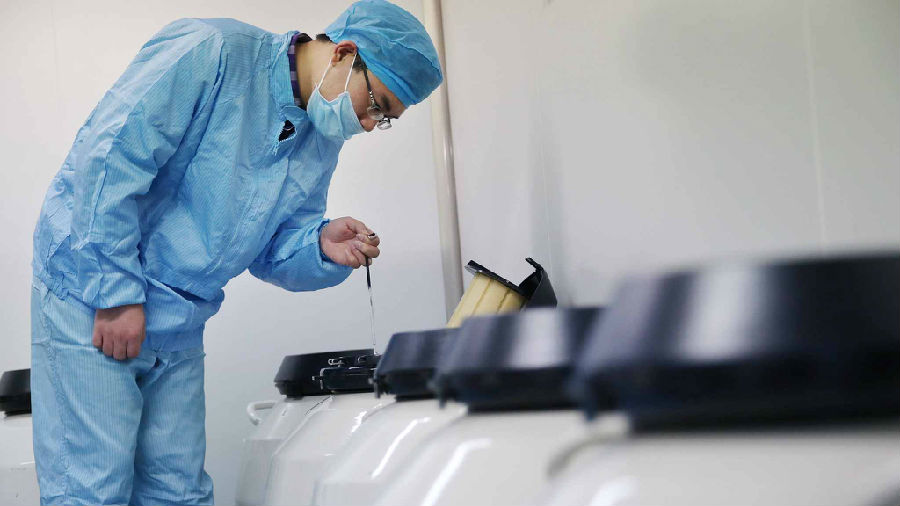(单词翻译:单击)
Thirty years after the first test tube baby was born in China, assisted reproduction centers face a dilemma: How to deal with leftover embryos.
距离我国第一例试管婴儿诞生已经过去了30年,辅助生殖中心面临困境:怎样处理无主胚胎?
As a country where the number of test tube babies ranks on top of the world, up to 200,000 babies are born via in-vitro fertilization (IVF) every year.
我国每年有20万人口借助体外授精技术出生,诞生的试管婴儿数量居全球之首。
For every IVF cycle, the hospital cultivates several embryos, implants two into the uterus, and the rest are frozen in liquid nitrogen tanks in the hospital.
每一个试管婴儿周期,医院会培育多个胚胎,将两个胚胎植入子宫里,剩余的胚胎则被放入医院液氮罐中冷冻保存。

Hospitals sign contracts with patients about the leftover embryos, which usually state that hospitals will keep the embryos for some time (for example, six months), and if the patients don't have further requirements, hospitals can discard the frozen embryos after the period.
医院与患者签订的有关无主胚胎的协议一般规定,医院会在一段时期(譬如6个月)内保存胚胎,超过期限后,如果患者不进一步提出要求,医院可将冷冻胚胎丢弃。
"But hospitals seldom discard embryos," said Yu Qi, head of the endocrine and reproductive gynecology center at Peking Union Medical College Hospital. "From doctors' point of view, embryos have the possibility of growing into a baby, so we don't want to destroy them."
北京协和医院内分泌与生殖妇科中心主任郁琦表示:“但是几乎没有医院扔掉胚胎。从医生角度来讲,毕竟胚胎有变成孩子的可能,因此我们不愿意销毁胚胎。”
If hospitals keep the embryos, there isn't enough room for the liquid nitrogen tanks
但如果一直存下去,医院已经快没有空间安置了。
Cost is also a big problem. Freezing an embryo costs 1,000 to 3,000 yuan every year. Nobody pays the bill except hospitals for the ownerless embryos.
此外,保存成本也是大问题。目前一份胚胎的年保存费用从一千元到三千元不等。这笔费用只能由医院买单。


